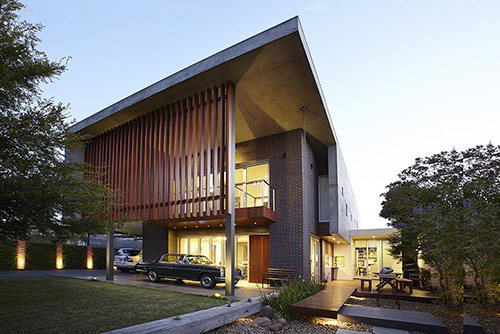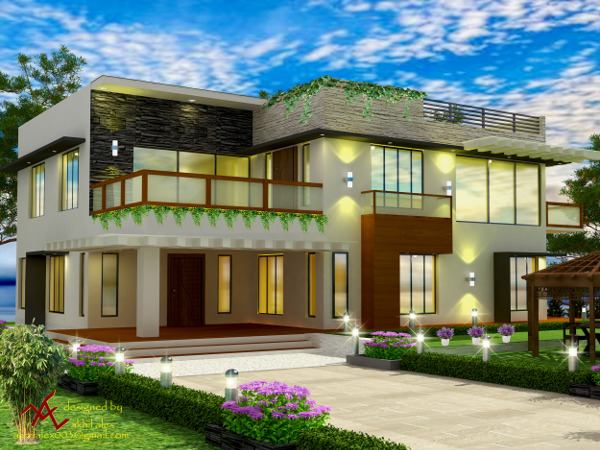Residential Interior Architect: Transforming Your Interior Spaces into Works of Art
Residential Interior Architect: Transforming Your Interior Spaces into Works of Art
Blog Article
Leading Patterns in Residential Architecture You Ought To Find Out About
As household design remains to progress, a number of compelling trends are forming the way we create and populate our home. Key developments such as lasting structure methods, the assimilation of smart home technology, and the surge of modular homes emphasize a significant change in the direction of both functionality and ecological responsibility. Furthermore, principles like open strategy living and biophilic layout are redefining our communication with space and nature. Recognizing these patterns not only notifies design options yet likewise exposes wider effects for way of living and neighborhood - residential house architect. What might these technologies mean for the future of property living?
Lasting Building Practices
A boosting number of property projects are accepting sustainable structure techniques, driven by an expanding understanding of ecological influence and energy effectiveness. This shift is identified by the assimilation of environmentally friendly products, energy-efficient styles, and ingenious building approaches. Contractors and homeowners are progressively focusing on making use of eco-friendly resources, such as bamboo and recycled metals, which not only lower the carbon footprint but additionally enhance the longevity and aesthetic charm of residential or commercial properties.
Incorporating energy-efficient systems is an additional crucial element of lasting structure - residential house architect. Functions such as high-performance insulation, energy-efficient home windows, and solar panels are ending up being standard in new household styles. These aspects not just add to lower energy intake yet also give significant long-lasting cost savings for property owners
Furthermore, the format of sustainable homes typically stresses natural light and air flow, lowering the reliance on synthetic lighting and environment control systems. Landscaping practices, such as xeriscaping, more promote sustainability by reducing water usage.
As the demand for lasting living options remains to increase, the household design industry is poised to adapt and innovate, making certain that future homes are not only ecologically responsible yet functional and additionally comfortable for their residents. - residential house architect
Smart Home Technology
Smart home technology is changing the method property owners connect with their living spaces, boosting benefit, security, and energy monitoring. This innovative technique integrates various gadgets and systems, allowing individuals to manage their homes remotely or via automated procedures. Central to this trend is using clever tools such as thermostats, lighting, security video cameras, and home appliances, all attached through the Net of Points (IoT)
One of the most enticing attributes of smart home modern technology is the ability to customize setups for ideal power efficiency. Home owners can monitor energy usage and change home heating, lighting, and air conditioning based upon their routines, substantially decreasing utility expenses. Additionally, innovative safety and security systems furnished with wise locks and security video cameras offer satisfaction, allowing remote surveillance and alerts to prospective security breaches.
Integration with voice-activated aides enhances individual experience, permitting house owners to control devices with easy voice commands. As innovation continues to evolve, the potential for clever home systems to enhance lifestyle expands, making them an important factor to consider in modern household style. Inevitably, wise home innovation is not just a trend but a basic shift towards more smart living settings.
Open Concept Living
Open concept living has become a defining feature in contemporary domestic style, characterized by the elimination of conventional barriers in between rooms. This layout approach promotes fluidity and connection within the home, enabling for a seamless change in between locations such as the kitchen, eating, and living spaces. By getting rid of wall surfaces and dividers, open principle layouts develop a sense of spaciousness, promoting an inviting atmosphere that enhances social interaction.

Moreover, this approach to property style aligns with minimalism, focusing on functional simplicity and visual coherence. House owners appreciate the flexibility of these formats, which can be easily adapted to mirror individual style via furnishings arrangement and style. As open concept living continues to gain traction, it continues to be a testament to advancing family characteristics and the need for homes that boost link and convenience.
Biophilic Layout
Biophilic layout has actually come to be progressively considerable in residential design, highlighting the intrinsic link between people and nature. This layout viewpoint seeks to incorporate all-natural aspects right into living spaces, thereby fostering a sense of health and enhancing the high quality of life for passengers. By including attributes such as natural light, plants, and go to the website organic materials, biophilic layout promotes an unified partnership in between interior environments and the all-natural world.
Crucial element of biophilic layout include large windows that provide unblocked sights of outdoor landscapes, living wall surfaces that present greenery right into interiors, and open floor plans that motivate airflow and natural light infiltration. Water features, both inside and outside the home, serve to produce calming environments and boost sensory experiences.
Additionally, using sustainable products not just supports ecological stewardship but likewise adds to healthier indoor air quality. As awareness of environmental problems increases, homeowners are increasingly prioritizing styles that mirror their connection to nature. Basically, biophilic style not just raises aesthetic allure yet likewise addresses psychological and emotional needs, making it an essential pattern in modern domestic architecture.
Modular and Prefab Residences

Moreover, prefab and modular homes are made with sustainability in mind. Several suppliers utilize energy-efficient systems and environmentally friendly products, such as solar panels and advanced insulation methods, contributing to decreased energy consumption and lower energy bills for property owners. The versatility of design alternatives enables for personalization, catering to varied useful requirements and aesthetic preferences.
As the need for inexpensive housing continues to climb, modular and prefab homes offer a viable solution, dealing with both financial and ecological obstacles. Communities are progressively identifying the potential of these structures, incorporating them into urban and rural settings. Generally, the trend towards modular and prefab homes represents a change towards extra lasting, reliable, and versatile living environments, making them a pivotal element of contemporary household architecture.
Conclusion
To conclude, the progressing landscape of domestic architecture showcases significant fads that focus on well-being, technology, and sustainability. Lasting structure practices and clever home innovations improve performance and comfort, while open concept living and biophilic style foster social interaction and a link to nature. The rise of prefab and modular homes offers adjustable and affordable solutions, showing a more comprehensive shift towards practical and accountable living. These trends collectively highlight a commitment to creating ingenious and harmonious domestic environments.
Secret advancements such as lasting structure techniques, the assimilation of wise home technology, and the surge of modular homes underscore a significant change in the direction of both functionality and ecological obligation.The increase of prefab and modular homes has changed the household style landscape, using cutting-edge solutions for efficient and sustainable living.In addition, modular and prefab homes are made with sustainability in mind. Generally, the trend towards prefab and modular homes symbolizes a change towards much more lasting, efficient, and versatile living environments, making them a critical element of modern residential style.
Sustainable building techniques and smart home modern technologies improve effectiveness and ease, while open concept additional resources living and biophilic style foster social interaction and a link to nature.
Report this page